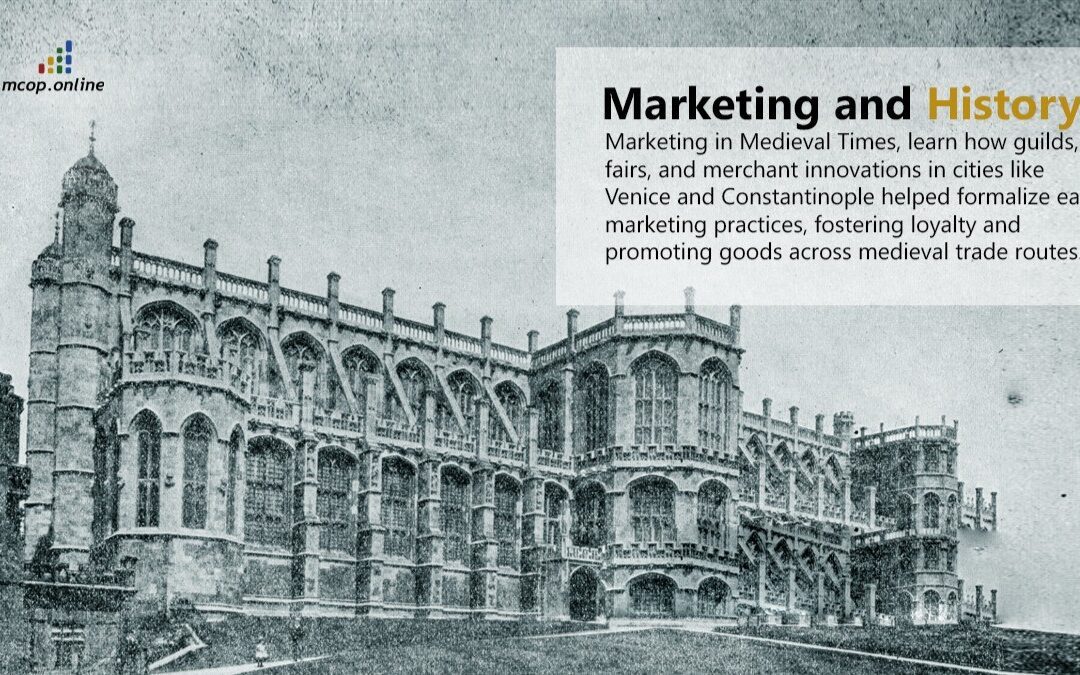As we discussed earlier, ancient trade routes and great empires like Rome and the Han Dynasty laid the groundwork for marketing. By the medieval era, these ideas evolved further with the rise of guilds, merchant classes, and bustling marketplaces in cities like Venice and Constantinople. This period shaped many practices we associate with marketing today.
Guilds: The First Organized Marketers
Guilds were groups of craftsmen and merchants who controlled specific trades, such as weaving, blacksmithing, or baking. They acted like early business organizations, setting rules for quality, pricing, and who could sell certain products. Guilds created symbols or marks for their goods, which worked like a brand. For example, if a customer bought cloth with a guild’s mark, they knew it was high-quality and trustworthy.
Guilds also promoted their work by participating in public events like fairs or festivals. During these events, they would showcase their skills and products, helping people see the value of their craftsmanship. This was an early version of advertising, as it made their goods stand out and attracted more customers.
By ensuring high standards and making their products recognizable, guilds built a strong reputation for their trades. This made people loyal to guild-made goods and encouraged them to return for future purchases.
Medieval Fairs: The First Big Markets
Medieval fairs were lively events that brought together buyers and sellers from many places. These fairs, held in cities like Bruges in Belgium or Champagne in France, were like giant markets where people could find goods from all over the world. They played a big role in medieval marketing.
To attract buyers, merchants used colorful banners, decorated stalls, and sometimes even hired people to call out and promote their goods. They organized their products to catch people’s eyes, much like how stores today arrange their items to look appealing. Prime spots in the market were expensive, so the best merchants got the most visible places, while others had to work harder to grab attention by offering discounts, free samples, or live demonstrations.
Fairs were also great places for merchants to test new products. If something sold well, they could bring more of it next time. This was an early form of market research, as it helped sellers understand what customers wanted.
The Merchant Class: Selling Stories and Building Trust
In the later medieval period, individual merchants became key players in trade. They often traveled long distances to bring back rare goods like spices, silks, or gems. Unlike guilds, which focused on group reputation, these merchants built personal reputations to attract customers.
Venetian merchants, for example, became famous for selling luxurious goods. They made their products more appealing by telling exciting stories about faraway places where the items came from. These stories made customers feel like they were buying something rare and special. This idea of creating a story around a product to make it more desirable is still used in marketing today.
In Constantinople, marketplaces were full of merchants using clever techniques to sell. They bartered with customers, adjusted their prices, and tailored their sales pitches to match different cultures. Some merchants even created a sense of scarcity by saying their goods were limited or exclusive, making buyers want them more.
Building Customer Loyalty
Even in medieval times, sellers understood the value of keeping customers happy. They often gave small gifts, offered discounts to loyal buyers, or allowed trusted customers to pay later. For example, a cloth merchant might show a returning customer their best fabrics first, making them feel valued and special.
Guilds also played a role in customer loyalty. People trusted guild-approved products because they knew the quality would be consistent. This trust kept customers coming back, just like people today stick to brands they know and like.
Conclusion
The medieval era was a turning point for marketing. Guilds created early versions of branding and quality control, while fairs and merchants used creative ways to attract buyers. They understood the importance of trust, storytelling, and customer loyalty—ideas that are still at the heart of marketing today. These developments helped bridge the gap between ancient trade and the more complex marketplaces we see in modern times.
Next, we will come up with some interesting things you would love to know about the printing revolution and the first advertisements, so stay tuned!!

